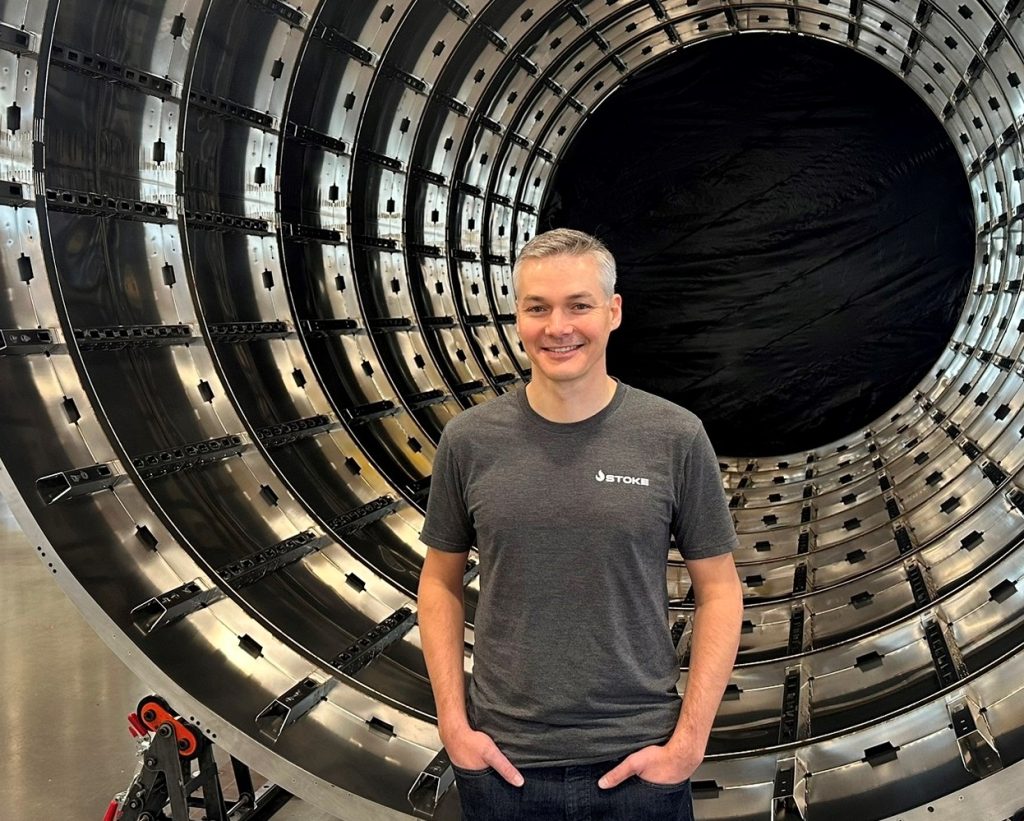Stoke Space, a startup based in Kent, Washington, is spearheading innovations in reusable spacecraft, driven by CEO Andy Lapsa’s vision to revolutionize the aerospace industry akin to Elon Musk’s SpaceX and Jeff Bezos’ Blue Origin. Stoke Space has a unique mission: to develop fully reusable space vehicles that can efficiently travel to space and return for subsequent missions, thereby dramatically lowering the costs associated with space access. This ambition is not merely a technical challenge; it represents a fundamental shift in the way rockets are conceptualized and utilized—moving away from the decades-old model where multi-million dollar rockets were discarded after a single use. The ethos of reducing space travel costs and enhancing environmental sustainability resonates with significant investors, including Bill Gates, who see the promise of reusable rockets as a vehicle for addressing climate change.
Lapsa’s journey into the aerospace sector began in his childhood, where he built model rockets, sparking an enduring passion for space exploration. Though he initially aimed for a career in architecture, Lapsa transitioned to mechanical engineering at Cornell University and earned a Ph.D. in aerospace engineering from the University of Michigan. His career in aerospace took off at Blue Origin, where he played a crucial role in developing propulsion systems, leading to his collaboration with Tom Feldman, Stoke’s chief technology officer. Recognizing the immense potential for reusability in rocketry, they launched Stoke Space in 2019, aiming to create a paradigm shift in space transportation.
From its inception, Stoke Space focused on creating an agile business model, securing grants from entities such as NASA and the National Science Foundation while raising significant capital—$9.1 million in seed funding first, and later $65 million from Breakthrough Energy Ventures. Establishing a development facility in Moses Lake, Washington, Stoke Space tested its prototype rockets, including the Hopper2, designed to demonstrate their reusability technology. Notably, their approach seeks to innovate beyond established designs, such as those of SpaceX, especially concerning the recovery of the second stage of rockets—traditionally discarded. By designing a heat shield that employs liquid hydrogen cooling techniques, Stoke aims to create a robust second-stage vehicle, representing a new frontier in reusability technology.
The company’s manufacturing facility in Kent serves as the heart of its operations, built to accommodate extensive rocket production and featuring state-of-the-art machine shops and advanced 3-D printing technology. Lapsa emphasizes the importance of rigorous testing and iterating designs, mirroring the techniques successfully employed by SpaceX. The culture at Stoke Space encourages rapid prototyping, learning through failures, and refining ideas based on real-world results. This innovative strategy draws from each founder’s strengths—Lapsa’s business acumen complements Feldman’s technical expertise, fostering a collaborative environment where creative engineering solutions can thrive.
Looking ahead, Stoke Space anticipates launching its Nova rocket by the end of 2024, marking a significant stepping stone toward achieving orbital flight. Unlike other large players like SpaceX and Blue Origin that dominate heavy-lift capabilities, Lapsa envisions carving out a niche market for medium-lift launches, catering to smaller payloads while maintaining a competitive edge in pricing and service availability. This porous vision, supported by significant funding from forward-thinking investors, reflects an increasing awareness of space’s role in studying and addressing climate change. Lapsa argues that cheaper access to space facilitates more efficient tracking of environmental challenges, suggesting that innovations in aerospace technology can indirectly impact global sustainability goals.
Stoke Space’s leadership is acutely aware of the competitive landscape, yet Lapsa regards the rise of rival launch systems, such as SpaceX’s Starship, as an opportunity rather than a threat. He believes that the industry’s growth will usher in greater demand for specialty services catering to medium-lift payloads. As he charts the future of Stoke Space, Lapsa remains open to new possibilities, underscoring that their aspirations extend beyond low Earth orbit. The company aims to be a key player in a diverse and thriving space economy, with various opportunities anticipated in the broader solar system—especially as ventures toward Mars gain traction.
Ultimately, Stoke Space, under Lapsa’s leadership, is not merely aiming to become a participant in the lucrative space economy but aspires to be a transformative force. While currently laser-focused on developing its Nova rocket, the company’s ethos extends to contributing to humanity’s broader ambitions in space, aligning with Musk’s and Bezos’s grand visions. By ensuring their innovations are sustainable and scalable, Stoke Space positions itself at the intersection of aerospace engineering and climate science, fostering a robust dialogue on how advancements in space technology can drive crucial environmental insights on Earth. Lapsa’s vision encapsulates the potential for a flourishing, competitive, and sustainable space economy where diverse companies work in concert to address pressing planetary challenges while expanding the frontiers of human exploration.














